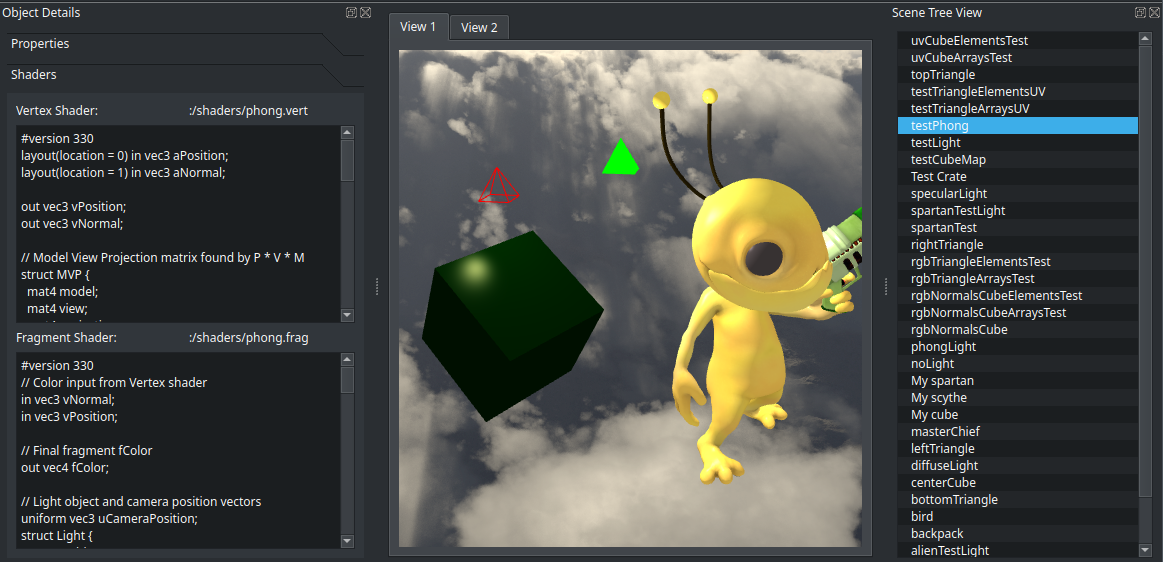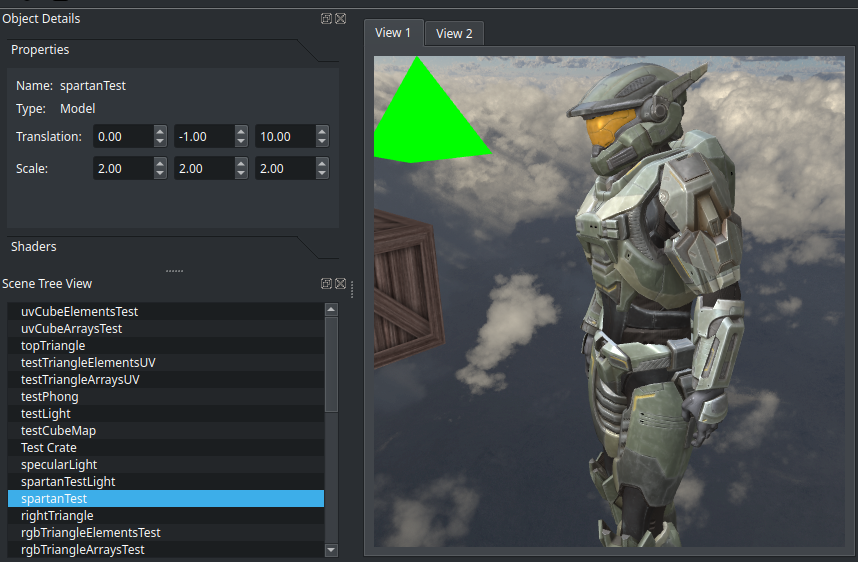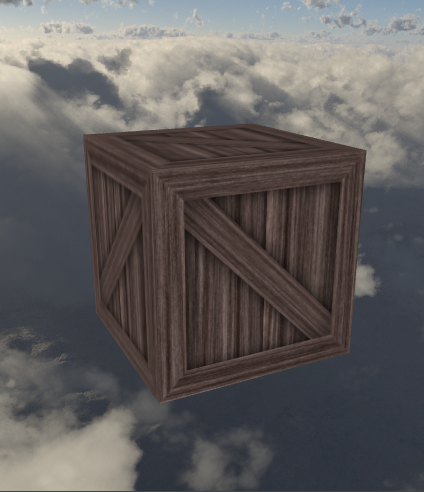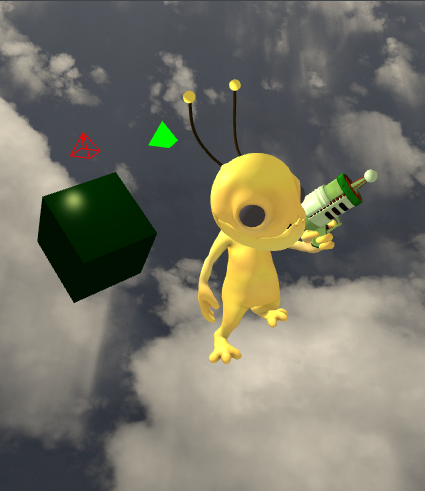Qtk
The Qtk desktop application provides a model loader using Assimp within a Qt widget application. You can fly around the scene using WASD while holding down the left or right mouse button. QtkWidget is the primary QOpenGLWidget used to render the scene and handle input.
The underlying shared library libqtk wraps QOpenGL objects in convenience classes that leverage lower-level OpenGL APIs to handle the rendering process manually. Many of these classes offer ways to expand the low-level OpenGL logic within a Qt application without having to set up much scaffolding.
The Qtk GUI is built using custom Qt Designer plugins. These can be installed to Qt Designer for use in other Qt applications, or built exclusively for Qtk. See Build Options for more details.
Object names can be double-clicked in the tree view panel for quick camera navigation. Properties of the object, like shader code and translation / scale, can be viewed and modified in the side panel.
All side panels and toolbars are dockable widgets that can be popped out and reorganized as needed. Panels can also be stacked to create a docked widget with tabs. The central widget that provides the camera view into the scene cannot be detached from the main window in this way.
The small triangles floating near 3D models represent the light source being used for the shader. These appear on models using phong, specular, and diffuse lighting techniques.
The example scene contains basic examples like texture mapping to make a crate from simple cube geometry.
This scene is used in the following screenshots, and can be built locally by enabling
the QTK_GUI_SCENE Build Option described below. Because this scene
uses large 3D model resources, this option is disabled by default.
The default scene with this option disabled is empty, but comes with a default skybox.
Models can be added to the scene by clicking and dragging an .obj into the scene view.
Examples of Ambient, Diffuse, and Specular GLSL shaders.
| Ambient | Diffuse | Specular |
|---|---|---|
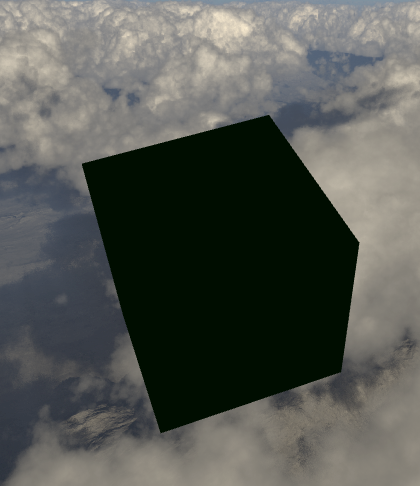 |
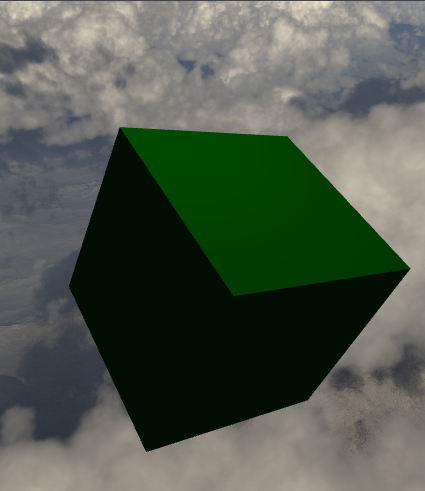 |
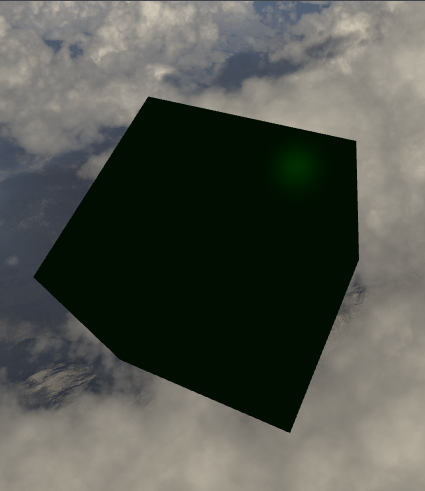 |
And more advanced techniques like Phong lighting (ambient + diffuse + specular) and normal mapping.
| Normal Mapping Disabled | Normal Mapping Enabled |
|---|---|
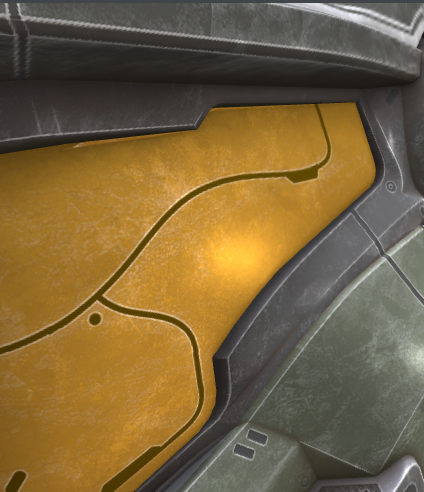 |
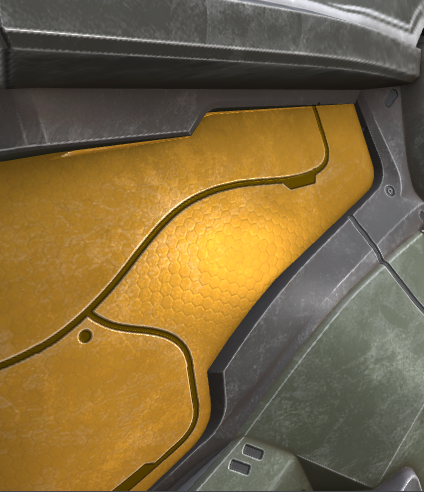 |
See the View toolbar menu to enable debug console widgets for open scenes or reopen previously closed panels.
Key features that are planned:
- Runtime loading of
.objor similar 3D models. - Drag-and-drop interaction for adding objects to the scene.
- Shader / object properties panel to modify related settings.
- Reduce size of application resources and git references.
- Runtime reloading of modified GLSL shaders attached to objects within scenes.
- Multiple views of a scene at one time.
- Camera control modes such as panning, orbiting, or following objects.
- Save / load scene data. The current model requires writing C++ code.
- Basic text editor for quickly modifying shaders attached to objects.
For examples of using libqtk, see the example-app project in the root of this repository.
To get textures loading on models look into material files and see some examples at qtk-resources/resources/models.
Source Builds
Qtk was developed and tested using CLion
and Qt Creator.
Simply open the root CMakeLists.txt with either of these editors and default
configurations will be loaded. To simplify providing Qt to the build, Qt Creator
is the recommended option.
If you have manually installed Qt6 Open Source Binaries
for your system, be sure to correctly set your CMAKE_PREFIX_PATH in the next steps.
On Ubuntu 24.04 the default installation directory to use for this path using Qt 6.5.0 is $HOME/Qt/6.5.0/gcc_64/lib/cmake.
The Ubuntu apt repositories contain all the packages we need to build all targets. To build Qtk desktop application with the scene in the screenshots below run the following commands.
sudo apt update && sudo apt install cmake build-essential git ccache libxkbcommon-dev libassimp-dev qt6-base-dev qt6-tools-dev
cmake -DQTK_GUI_SCENE=ON -B build
cmake --build build
./build/bin/qtk_gui
Build Options
Qtk is composed of three separate components.
- The shared library libqtk provides classes that leverage QOpenGL functionality
while still using lower-level OpenGL APIs to customize the rendering process.
Many of these classes can be further expanded, such as Qtk::Scene.
This taget,
qtkin cmake, is always selected to build and install as it is required by all other components in this project. - The Qtk desktop application is built using libqtk within a Qt application.
This target,
qtk_guiin cmake, is optional and can be controlled using theQTK_GUIoption below. - The GUI for the Qtk desktop application is constructed using a custom set of Qt Designer widget plugins that are also built using libqtk.
If
QTK_GUIis disabled this target (qtk_plugins) is optional and can be controlled using theQTK_PLUGINSoptions below.
| Name | Description | Default |
|---|---|---|
| QTK_DEBUG | Enable debug mode. | OFF |
| QTK_SUBMODULES | Use git submodules to fetch assimp dependency. | OFF |
| QTK_EXAMPLE | Build the libqtk example desktop application. | ON |
| QTK_CCACHE | Enable CCACHE. | ON |
| QTK_ASSIMP_NEW_INTERFACE | Use the assimp::assimp interface. Recommended for WIN / OSX. | OFF |
| QTK_PLUGINS* | Install Qtk plugins to Qt Designer. | OFF |
| QTK_GUI | Build and install Qtk desktop application. | ON |
| QTK_GUI_SCENE | Fetch external 3D model resources for example scene. | OFF |
*The Qtk plugins are always built if QTK_GUI is enabled. Disabling this option
with QTK_GUI set will not mark the plugins for installation if we do
cmake --install build/ without selecting a component. If both QTK_GUI and
QTK_PLUGINS are unset, neither will be built.
If you are building on Windows / Mac, consider setting
the -DQTK_ASSIMP_NEW_INTERFACE cmake build option.
By default, the build will not initialize Assimp as a git submodule and build
from source.
We can turn this on by setting the -DQTK_SUBMODULES=ON flag when running
CMake.
Building using this option will fetch and build Assimp for us, but builds will
take longer as a result.
Using -DQTK_SUBMODULES=ON supports providing assimp on cross-platform builds (
Windows / Mac / Linux) and may be easier to configure.
cmake -B build-all -DQTK_GUI=ON -DQTK_PLUGINS=ON -DQTK_EXAMPLE=ON -DQTK_SUBMODULES=ON -DCMAKE_PREFIX_PATH=$HOME/Qt/6.6.0/gcc_64
Qtk Components
As described in Build Options, Qtk is composed of three separate components. Each component can be individually selected for building or installation.
For this example we will configure the build with all options enabled. In the separate sections below we can install individual components with cmake.
sudo apt update -y && sudo apt install cmake build-essential git ccache libxkbcommon-dev libassimp-dev qt6-base-dev qt6-tools-dev -y
git clone https://github.com/shaunrd0/qtk
cd qtk
# Configure the build with all components enabled
cmake -B build-all -DQTK_GUI=ON -DQTK_PLUGINS=ON -DQTK_EXAMPLE=ON -DCMAKE_PREFIX_PATH=$HOME/Qt/6.6.0/gcc_64
# Build all targets
cmake --build build-all/
Now that we have all the components fully built, the following sections will install each component individually. If you want to uninstall previously installed components, run the following command.
sudo xargs rm -v < install_manifest.txt
Qtk Library
Shared libqtk library for working with lower-level OpenGL to customize the rendering process.
We can install this library on a system path or a custom path and then
set CMAKE_PREFIX_PATH to point to this location when building an application
using libqtk.
Here we will install to the /usr/local/ path.
# Install libqtk only
cmake --build build-all/ --target qtk -- -j $(nproc)
cmake --install build-all/ --component qtk --prefix=/usr/local
-- Install configuration: "Release"
-- Installing: /usr/local/lib/cmake/Qtk/QtkConfig.cmake
-- Installing: /usr/local/lib/cmake/Qtk/QtkConfigVersion.cmake
-- Installing: /usr/local/lib/cmake/Qtk/QtkTargets.cmake
-- Installing: /usr/local/lib/cmake/Qtk/QtkTargets-release.cmake
-- Installing: /usr/local/lib/static/libqtk.a
-- Installing: /usr/local/include/qtk/camera3d.h
-- Installing: /usr/local/include/qtk/input.h
-- Installing: /usr/local/include/qtk/meshrenderer.h
-- Installing: /usr/local/include/qtk/model.h
-- Installing: /usr/local/include/qtk/modelmesh.h
-- Installing: /usr/local/include/qtk/object.h
-- Installing: /usr/local/include/qtk/qtkapi.h
-- Installing: /usr/local/include/qtk/qtkiostream.h
-- Installing: /usr/local/include/qtk/qtkiosystem.h
-- Installing: /usr/local/include/qtk/scene.h
-- Installing: /usr/local/include/qtk/shape.h
-- Installing: /usr/local/include/qtk/skybox.h
-- Installing: /usr/local/include/qtk/texture.h
-- Installing: /usr/local/include/qtk/transform3D.h
Qtk GUI
The Qtk desktop application can be built and installed with the following commands.
cmake --build build-all/ --target qtk_gui -- -j $(nproc)
# Install Qtk desktop application (output removed)
# Installation prefix path must be absolute, since Qtk uses Qt deploy tools.
cmake --install build-all/ --component qtk_gui --prefix=$(pwd)/install
./install/bin/qtk_gui
If any errors are encountered loading plugins, we can debug plugin loading by setting the following environment variable
QT_DEBUG_PLUGINS=1 ./install/bin/qtk_gui
Qtk Plugin Collection
This project defines a collection of widget plugins for use with Qt Designer. These plugins were used to build the interface for the Qtk desktop application. Qt Designer will list Qtk widgets in the side panel when editing a UI file within the designer. Qtk widgets will also render and behave correctly within the UI preview in designer. The widgets in the Qtk collection were created by implementing the QDesignerCustomWidgetInterface and QDesignerCustomWidgetCollectionInterface interfaces.
To build and install the Qtk plugin collection -
cmake --build build-all/ --target qtk_plugins -- -j $(nproc)
# Install Qtk widget collection to use Qt Designer
# The path here should be initialized during build configuration, so no need for --prefix
cmake --install build-all/ --component qtk_plugins
-- Install configuration: "Release"
-- Up-to-date: /home/shaun/Qt/6.6.0/gcc_64/../../Tools/QtCreator/lib/Qt/lib/libqtk.a
-- Up-to-date: /home/shaun/Qt/6.6.0/gcc_64/../../Tools/QtCreator/lib/Qt/lib/libqtk_plugin_library.a
-- Up-to-date: /home/shaun/Qt/6.6.0/gcc_64/../../Tools/QtCreator/lib/Qt/plugins/designer/libqtk_collection.so
Example libqtk Application
There is a simple example of using libqtk in the example-app/
directory. The example can be built standalone using find_package or as a
target within any qtk build.
# Build the example from a configured qtk build tree
cmake --build build-all/ --target qtk_example -- -j $(nproc)
cmake --install build-all/ --component qtk_example --prefix=install
./install/bin/qtk_example
See the README in the example-app/ subdirectory for instructions on standalone builds.
Development
This project is using clang-format version >=15.0.5.
On Ubuntu 24.04, clang-format 18 is available to install in apt repositories.
sudo apt install clang-format clang-tidy
If clang-format --version is any earlier than 15.0.0, running clang-format will fail because this project uses configuration options made available since 15.0.0.
clang-format --version
Ubuntu clang-format version 18.1.3 (1ubuntu1)
CLion has integration for IDE code reformatting actions with clang-format.
If you're using CLion, the .clang-format configuration will be picked up by CLion automatically.
This repository provides the tools/format.sh helper script to run clang-tidy and clang-format on Ubuntu 24.04.
Running the script will build Qtk, so it's important to ensure you can manually build from source first.
If you'd still like to run these tools manually, see the instructions below.
clang-tidy can be run with the following commands.
# Move to the root of the repo
cd qtk
# Build
cmake -B build && cmake --build build -- -j $(nproc)
export SOURCES=src/**/*.cpp src/**/*.h example-app/*.cpp example-app/*.h
run-clang-tidy -p build/ -j $(nproc --ignore=1) -fix -config-file=.clang-tidy $SOURCES
Last we need to run clang-format, this can be done with the command directly.
This will reformat all the code in the repository.
clang-format -i --style=file:.clang-format $SOURCES
clang-format can be run with git integration (or CLion if you prefer).
Git will only reformat the lines you modified, which can be useful.
# If we want to format the last N commits
# git clang-format HEAD~N
# 3 commits
git clang-format HEAD~3
changed files:
app/examplescene.h
app/mainwindow.h
src/abstractscene.cpp
src/skybox.h
src/texture.cpp
src/texture.h
src/transform3D.h
Packaging
Packaging for Qtk is in early development. This section documents how to package Qtk, but only source builds have been verified on Windows / Mac / Linux. For this reason, it is recommended to install Qtk by strictly building from source at this time.
Below are the steps to package a Qtk release.
cd /path/to/qtk && cmake -B build
# Package Qtk
cmake --build build --target package
# Package Qtk including source files
cmake --build build --target package_source
Alternatively, we can use cpack directly -
cd /path/to/qtk && cmake -B build
# Generate all install packages
cpack -C Release
# Generate a specific archive package (ZIP)
cpack -C Release -G ZIP
# Generate a specific archive package (TGZ)
cpack -C Release -G TGZ
# Generate debian package (DEB)
cpack -C Release -G DEB
# Generate NSIS install package (NSIS)
cpack -C Release -G NSIS
Any of the above options can be appended with --trace-expand to debug package
generation issues.
The contents of all packages will depend on how the build was configured.
To generate packages for Qtk desktop application, we should
set -DQTK_GUI=ON. If this option is not set we will only package libqtk.
The NSIS installer will allow component-specific path modification for all of these installation components through a Windows GUI install application.
Resources
Some useful links and resources that I have found while working on this project.
QtPlugin Import / Export plugins
Model Artists
"Alien Hominid" (https://skfb.ly/onStx) by Nwilly_art is licensed under Creative Commons Attribution (http://creativecommons.org/licenses/by/4.0/).
"Scythe World Of Warcraft" (https://skfb.ly/6UooG) by Warcraft-3D-Models is licensed under Creative Commons Attribution (http://creativecommons.org/licenses/by/4.0/).
"Spartan Armour MKV - Halo Reach" (https://skfb.ly/6QVvM) by McCarthy3D is licensed under Creative Commons Attribution (http://creativecommons.org/licenses/by/4.0/).
"Survival Guitar Backpack (Low Poly)" (https://skfb.ly/6RnCB) by Berk Gedik is licensed under Creative Commons Attribution (http://creativecommons.org/licenses/by/4.0/). Model by Berk Gedik, from: https://sketchfab.com/3d-models/survival-guitar-backpack-low-poly-799f8c4511f84fab8c3f12887f7e6b36 Modified (learnopengl.com) material assignment (Joey de Vries) for easier load in OpenGL model loading chapter, and renamed albedo to diffuse and metallic to specular to match non-PBR lighting setup.
"Terror-bird (NHMW-Geo 2012/0007/0001)" (https://skfb.ly/onAWy) by Natural History Museum Vienna is licensed under Creative Commons Attribution-NonCommercial (http://creativecommons.org/licenses/by-nc/4.0/).
"Golden Lion Sitting OBJ Low Poly FREE" (https://skfb.ly/onZAH) by LordSamueliSolo is licensed under Creative Commons Attribution (http://creativecommons.org/licenses/by/4.0/).
